Amphipsocidae
Emilie Bess and Kevin P. Johnson


This tree diagram shows the relationships between several groups of organisms.
The root of the current tree connects the organisms featured in this tree to their containing group and the rest of the Tree of Life. The basal branching point in the tree represents the ancestor of the other groups in the tree. This ancestor diversified over time into several descendent subgroups, which are represented as internal nodes and terminal taxa to the right.

You can click on the root to travel down the Tree of Life all the way to the root of all Life, and you can click on the names of descendent subgroups to travel up the Tree of Life all the way to individual species.
For more information on ToL tree formatting, please see Interpreting the Tree or Classification. To learn more about phylogenetic trees, please visit our Phylogenetic Biology pages.
close boxIntroduction
The family Amphipsocidae includes 170 species in 17 genera with the center of diversity in Asia and Africa. One species, Polypsocus corruptus, is known from North America.
Amphipsocids are large-sized bark lice, 4-6 mm in length. They are known to inhabit broad-leaved, evergreen, and rainforest trees.
Characteristics
Synapomorphies
- Head: Vertex has a pair of concave areas.
- Forewing: hairs have distinctive pattern (see below).
- Hindwing: hairs have distinctive pattern (see below).
General Characters
- Head: Antennae have 13 segments.
- Vertex has a pair of concave areas.
- Legs:
- Tarsi have 2 segments.
- Wings:
- Wing hairs have distinctive pattern:
- Forewing has hairs on veins in 2 or more rows.
- Forewing has hairs on margin; they do on cross one another.
- Forewing membrane is usually hairless (occasionally with sparse hairs).
- Distal 1/2 of forewing has hairs on underside (ventral surface)
- Hindwing has hairs on margin and veins, membrane is hairless.
- Wing veins:
- Forewing pterostigma is shallow.
- Forewing areola postica is free from vein M.
- Abdomen:
- Abdomen has 2 or 3 vesicles (inflatable sacs) on underside.
- Male: Genitalia are similar to other members of Caeciliusetae:
- Phallosome is closed, the tip has a rough texture.
- Hypandrium is simple, not ornamented, spine on free margin is small or absent.
- Female:
- Subgenital plate lacks posterior lobe.
- Gonapophyses are reduced:
- Ventral valve is small.
- Dorsal valve is small.
- External valve is absent or is a remnant at base of dorsal valve.
- Eggs:
- Eggs are laid in groups and are covered by silken threads only.
How to Know the Family
- Large bark lice, 4-6 mm in length.
- Mandibles are large, insects look like their mouths are open.
- Abdomen has eversible vesicles (small inflatable sacs) on underside.
- Wings and body appear hairy.
- Forewing:
- Membrane is usually hairless.
- Hairs on veins are in 2 or more rows.
- Hairs on margin do on cross one another.
- Distal 1/2 of forewing has hairs on underside (ventral surface).
- Hindwing has hairs on margin and veins, but the membrane is hairless.
Family Monophyly
The monophyly of family Amphipsocidae is supported by two morphological characters: presence of a pair of concave areas on the head and distinctive patterns of the hairs on the forewing (see description above). Molecular data also support the monophyly of Amphipsocidae (4 genera sampled, 18S nuclear DNA; Johnson et al. 2004).
Discussion of Phylogenetic Relationships
Relationships within the family have not been studied using molecular techniques.
References
Johnson, K. P. & E. L. Mockford. 2003. Molecular Systematics of Psocomorpha (Psocoptera). Systematic Entomology 28: 409-40.
Johnson, K. P., K. Yoshizawa, and V. S. Smith. 2004. Multiple origins of parasitism in lice. Proceedings of the Royal Society of London B 271:1771-1776.
Lienhard, C. and C. N Smithers. 2002. Psocoptera (Insecta) World Catalogue and Bibliography. Muséum d'Histoire Naturelle, Geneva, Switzerland.
Mockford, E. L. 1993. North American Psocoptera (Insecta). Gainesville, Florida: Sandhill Crane Press.
New, T.R. 2005. Psocids, Psocoptera (Booklice and barklice), 2nd edition: Handbooks for the Identification of British Insects. Vol. 1, Part 7. Royal Entomological Society, London, UK.
Smithers, C. N. 1996. Psocoptera. Pp. 1-80, 363-372 (Index) in Wells A. (ed.) Zoological Catalogue of Australia. Vol. 26. Psocoptera, Phthiraptera, Thysanoptera. Melbourne: CSIRO Publishing, Australia.
Yoshizawa, K. 2001. Systematic study of Amphipsocidae in Japan (Psocodea: 'Psocoptera' Caeciliusetae), with comments on higher classification within the family. Insecta Matsumurana 58: 1-25.
Yoshizawa, K. 2002. Phylogeny and higher classification of suborder Psocomorpha (Insecta: Psocodea:'Psocoptera'). Zoological Journal of the Linnean Society 136: 371-400.
Title Illustrations

| Scientific Name | Polypsocus corruptus |
|---|---|
| Location | Groton, Ma. |
| Comments | 10/28/2007 |
| Specimen Condition | Live Specimen |
| Sex | m |
| Life Cycle Stage | adult |
| View | lateral |
| Copyright | © Tom Murray |
| Scientific Name | Polypsocus corruptus |
|---|---|
| Location | Groton, Ma. |
| Comments | 10/3/2007 |
| Specimen Condition | Live Specimen |
| Sex | f |
| Life Cycle Stage | adult |
| View | frontal |
| Copyright | © Tom Murray |
| Scientific Name | Matsumuraiella radiopicta |
|---|---|
| Location | Japan |
| Specimen Condition | Live Specimen |
| Identified By | K. Yoshizawa |
| Life Cycle Stage | adult |
| View | lateral |
| Size | 3mm |
| Copyright | © 2006 Kazunori Yoshizawa |
About This Page
Emilie Bess

Illinois Natural History Survey, Champaign, Illinois, USA
Kevin P. Johnson

Illinois Natural History Survey, Champaign, Illinois, USA
Correspondence regarding this page should be directed to Emilie Bess at
bess@inhs.uiuc.edu
and Kevin P. Johnson at
kjohnson@inhs.uiuc.edu
Page copyright © 2009 Emilie Bess and Kevin P. Johnson
All Rights Reserved.
- First online 25 March 2009
- Content changed 25 March 2009
Citing this page:
Bess, Emilie and Kevin P. Johnson. 2009. Amphipsocidae. Version 25 March 2009 (under construction). http://tolweb.org/Amphipsocidae/14469/2009.03.25 in The Tree of Life Web Project, http://tolweb.org/




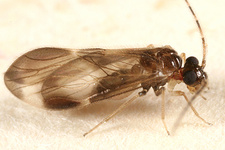
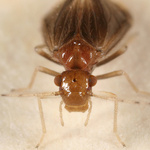
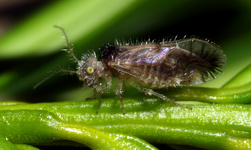
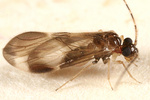
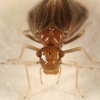


 Go to quick links
Go to quick search
Go to navigation for this section of the ToL site
Go to detailed links for the ToL site
Go to quick links
Go to quick search
Go to navigation for this section of the ToL site
Go to detailed links for the ToL site